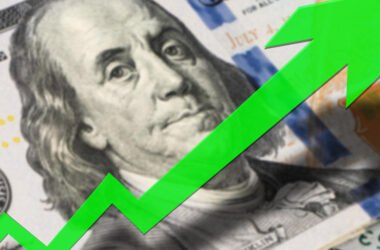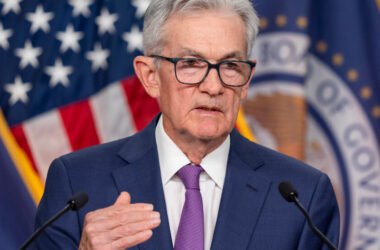Most of the points more likely to dominate Thursday’s televised debate between President Biden and former President Donald J. Trump boil all the way down to economics.
Inflation, immigration, authorities taxing and spending, rates of interest, and commerce relationships may all take middle stage — and each candidates may make sweeping claims about them, as they usually do at marketing campaign occasions and different public appearances.
On condition that, it may very well be useful to enter the occasion with an understanding of the place the financial knowledge stand now and what the newest analysis says. Beneath is a rundown of a few of as we speak’s hot-button matters and the context you must comply with alongside like a professional.
Inflation has been excessive, however it’s slowing.
Inflation jumped throughout the pandemic and its aftermath for a number of causes. The federal government had pumped greater than $5 trillion into the economic system in response to Covid, first below Mr. Trump after which below Mr. Biden.
As households acquired stimulus checks and constructed up financial savings amid pandemic lockdowns, they started to spend their cash on items like automobiles and residential health club tools. That burst of demand for bodily merchandise collided with manufacturing unit shutdowns world wide and snarls in transport routes.
Shortages for every thing from furnishings elements and bicycles to laptop chips for automobiles started to crop up, and costs began to leap in 2021 as some huge cash chased too few items.
Then Russia invaded Ukraine in early 2022, and the geopolitical issues pushed gasoline and meals costs up sharply. Past that, the prices of some key companies — notably hire — had begun climbing rapidly. Client Value Index inflation peaked at 9.1 p.c in the summertime of 2022, fueled by a mixture of coverage and plain dangerous luck.
The Federal Reserve reacted haltingly at first — too slowly, its personal officers say in hindsight. However policymakers started to boost rates of interest in early 2022, lifting them to the best degree in additional than twenty years over simply 16 months. They’ve left them at that elevated price of 5.3 p.c ever since.
Inflation is now slowing. It got here in at 3.3 percent within the newest studying, sooner than the roughly 2 p.c that was regular earlier than the pandemic however a lot slower than its peak.
That merely signifies that costs usually are not rising as rapidly — not that they’re broadly coming down. Whereas some retailers have been chopping costs to lure shoppers, costs for groceries, housing and different requirements are a lot greater than a number of years in the past.
The economic system has been surprisingly sturdy.
As America confronted a burst of speedy inflation — one which was quickly felt throughout different superior economies world wide — it additionally skilled solid economic growth.
Customers have continued to spend, although that has slowed considerably lately. The inventory market is on a tear as improvements like synthetic intelligence stoke optimism amongst buyers. Unemployment has been at or below 4 percent since late 2021, the longest stretch of such low unemployment for the reason that Sixties, and wage growth has been strong.
Hiring has remained effectively above the degrees that had been regular within the decade main as much as the pandemic, stunning forecasters month after month.
Immigration has boosted the labor market, although with rising pains.
A part of the explanation that employers have been capable of rent a lot? Immigration. After slowing sharply on the onset of the pandemic, authorized immigration has bounced again. Undocumented immigration and the influx of refugees have additionally surged around the world lately, together with in the USA.
Goldman Sachs economists estimate that two million folks may immigrate into the nation on internet this yr, twice the standard price. The inflow is taxing housing and human assets in some cities, stoking backlash among voters.
Mr. Trump has been promising to choke off immigration throughout the southern border and to pursue massive deportations. Goldman Sachs analysts identified that courtroom challenges may restrict his curbs on migration, and estimated that immigrant inflows may gradual to anyplace from very low — approaching zero briefly — to about 1.5 million folks per yr below his watch, relying on which insurance policies took impact.
Whereas excessive ranges of immigration have generated pushback, they’ve additionally provided notable financial advantages. Immigration has been offering a supply of would-be staff to employers who’re hungry to rent, boosting financial development and even serving to the nation with its debt load.
If coverage doesn’t change and the variety of folks coming into the USA slows solely steadily, the Congressional Funds Workplace estimates that the additional migration will reduce the deficit by practically $900 billion over the subsequent decade.
If immigration all of the sudden halted or reversed, economists mentioned, that would trigger painful labor shortfalls and shortages in key industries — pushing up costs. Any deficit profit would even be much less pronounced.
The deficit has exploded, and with it the nationwide debt.
Assist with deficit discount would come at a welcome second: The funds deficit in 2024 is projected to be $1.9 trillion, the Congressional Funds Workplace lately estimated, up from a forecast of $1.6 trillion earlier this yr. Over the subsequent 10 years, the annual deficit is projected to swell to $2.9 trillion.
That’s quickly including to the nationwide debt pile, with little finish in sight. Each Mr. Trump’s and Mr. Biden’s administrations notably swelled the deficit and debt, even excluding pandemic reduction.
Shrinking the nation’s debt pile may show troublesome within the years forward, partly as a result of America is paying extra in curiosity prices on its borrowing. After years of rock-bottom charges within the 2010s after which once more in 2020, charges appear poised to stay greater for longer now.
Rates of interest are additionally excessive, however politicians have little management over that.
The Fed, America’s nation’s central financial institution and the establishment that units rates of interest, went into 2024 anticipating to chop borrowing prices a number of instances. However officers have dialed these forecasts again as inflation has proved extra cussed than anticipated.
Buyers nonetheless anticipate that central bankers will lower rates in September as inflation comes down and as officers attempt to keep away from tipping the economic system into recession. However policymakers themselves forecast this month that charges would keep above 3 percent via 2026, and that even within the longer run they’d remain higher than they were at any level within the 2010s.
Excessive charges are additionally painful for customers, who see them as one other price on their assets as they pay extra for automotive loans, mortgages and bank card debt. In truth, the bounce in borrowing prices does rather a lot to elucidate why shoppers are so glum at the same time as inflation cools, recent research suggests.
The catch, from a political standpoint, is that the White Home has no direct management over charges.
The president will get to select a Fed chair, however that particular person must be confirmed by the Senate, making it laborious to pick out a loyalist who will do the White Home’s bidding. As soon as the chair is confirmed, the administration has little management over her or him — it’s not even clear {that a} president can hearth or efficiently demote a Fed chair, an thought Mr. Trump flirted with however finally deserted throughout his administration.
Each events are embracing tariffs, however at some price.
Commerce coverage is nearly sure to come back up throughout the debate. Mr. Trump slapped tariffs on buying and selling companions — notably China — whereas in workplace, and he has been pledging much more drastic ones if elected once more. Mr. Biden himself introduced a pointy improve in tariffs final month on a extra focused vary of Chinese language imports, together with electrical automobiles, photo voltaic cells, semiconductors and superior batteries.
Such insurance policies usually are not simply financial however typically geopolitical. The purpose has been to foster U.S. manufacturing in delicate industries, or in some instances to safe extra resilient provide chains.
However a part of the purpose has additionally been to deliver manufacturing jobs again to the USA. Economic research has suggested that Mr. Trump’s tariffs have finished little to deliver jobs again to this point, however that they had been typically a political success regardless of that.
Tariffs usually are not a cost-less coverage: They’re typically handed alongside, at the very least partly, to customers. Analysis has prompt that U.S. importers and shoppers largely bore the brunt of Mr. Trump’s tariffs.








